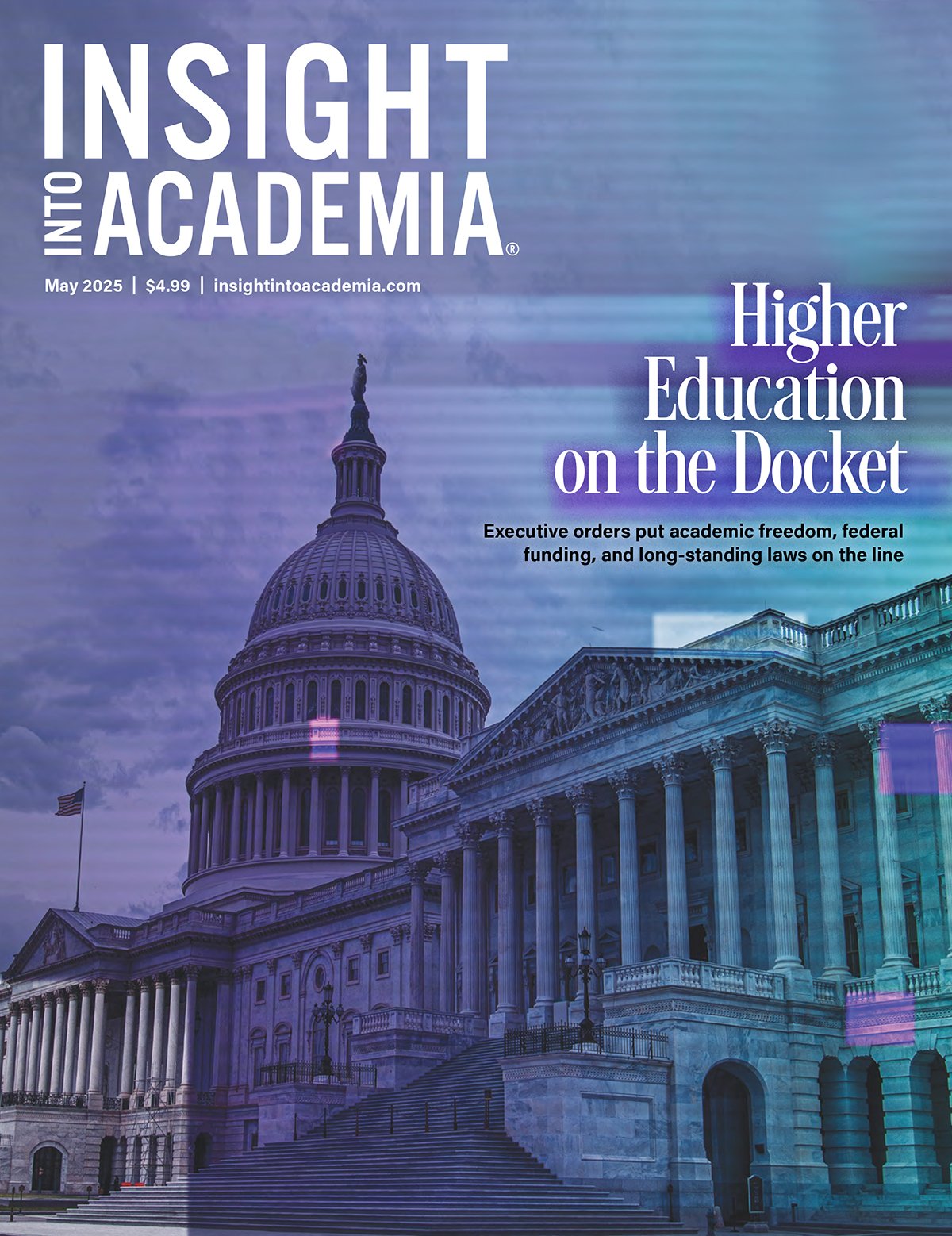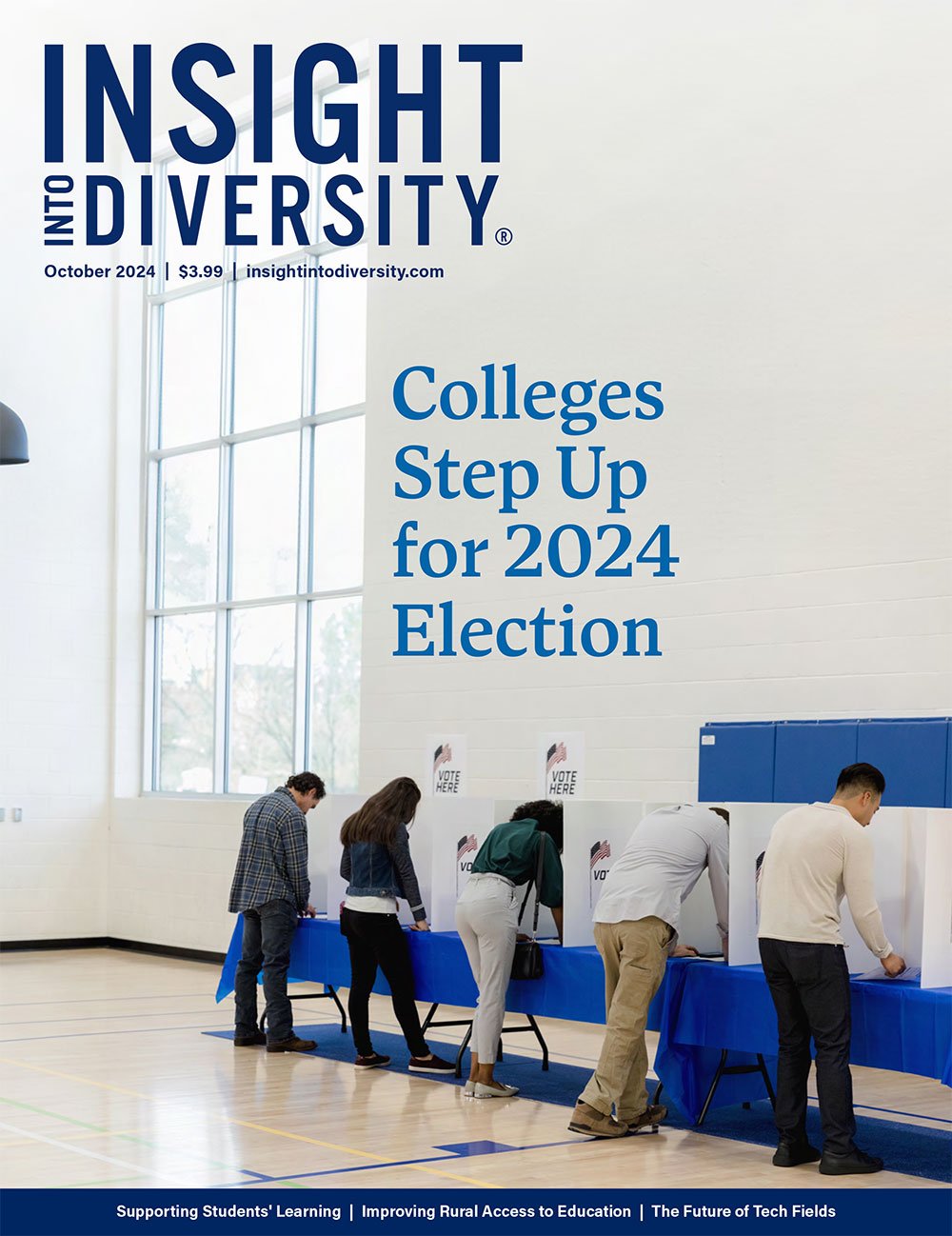Citing equity concerns, more colleges are opting to permanently eliminate the ACT and SAT, but the future of college admissions remains far from clear.
Of the many changes to the higher education landscape since the start of the COVID-19 pandemic, perhaps one of the most surprising — and most controversial — is the drastic decline in popularity of standardized college entrance exams.
Prior to the pandemic, approximately 54 percent of the nation’s colleges required ACT or SAT scores for admission, according to data from the National Center for Fair and Open Testing. By the start of the spring 2022 semester, that figure had dropped to less than 25 percent.
While the use of standardized exams in college admissions had begun declining in recent years due to questions about their efficacy and fairness, most of the schools that eliminated them in 2020 did so because in-person tests were canceled to reduce the spread of COVID-19. Many pledged to continue going test-optional during the 2021-2022 admissions cycle to accommodate students already grappling with the challenges wrought by remote learning and upended academic schedules.
Now, higher education appears divided over whether these requirements should be reinstated.
Advocates for eliminating the ACT and SAT have long argued that they are biased against underrepresented applicants, and many who support using these tests acknowledge that students from more privileged backgrounds have the upper hand when it comes to affording the time and money required for test prep courses and tutors. Yet others believe that standardized entrance exams actually support diversity in admissions and are more reliable in demonstrating academic potential than extracurricular activities, recommendation letters, and other factors that tend to benefit middle- and upper-income students.
The Massachusetts Institute of Technology (MIT) took this stance when it announced at the end of March 2022 that it was reinstating the SAT after going test-optional in July 2020.
“Our research shows standardized tests help us better assess the academic preparedness of all applicants, and also help us identify socioeconomically disadvantaged students who lack access to advanced coursework or other enrichment opportunities that would otherwise demonstrate their readiness for MIT,” Stu Schmill, the dean of admissions and student financial services, wrote in a blog post on March 28. “We believe a requirement is more equitable and transparent than a test-optional policy.”
Schmill’s detailed post explaining MIT’s decision notes that his office has a dedicated research team who redoubled their efforts during the pandemic to understand how to best evaluate academic preparedness among applicants. Their research revealed that standardized testing, especially in math, significantly improves their ability to accurately predict a student’s chance of success. While exams other than the ACT and SAT do provide some indication of student success, these options are generally more socioeconomically restricted, Schmill writes. “[A]s a result, not having SAT/ACT scores to consider tends to raise socioeconomic barriers to demonstrating readiness for our education, relative to having them, given these other inequalities.”
Some experts have cautioned other colleges not to let MIT’s rationale — with its heavy emphasis on math and science education — influence their decision in regard to reinstating entrance exams across the board. Those who oppose such tests have long argued that they do not truly reflect a student’s ability to succeed across a variety of disciplines.
The California State University (CSU) system adopted this position when it announced in March 2022 that it would continue its COVID-era suspension of the ACT and SAT indefinitely. As CSU is the largest four-year public university system in the U.S. — with an enrollment of nearly 500,000 students — experts say its decision could hold major sway in how other institutions choose to proceed.

“This decision aligns with the California State University’s continued efforts to level the playing field and provide greater access to a high-quality college degree for students from all backgrounds,” CSU Chancellor Steve Relyea explained in a statement. “In essence, we are eliminating our reliance on a high-stress, high-stakes test that has shown negligible benefit and providing our applicants with greater opportunities to demonstrate their drive, talents, and potential for college success.”
 In an interview with CBS affiliate KPIX, Kathryn Palmieri, CSU East Bay’s executive director of academic advising and career education, said that these exams simply do not measure what her school is looking for. They may be useful practice for students who aspire to rigorous postgraduate programs, such as law or medical school, but otherwise they serve as barriers — not gateways — to higher education.
In an interview with CBS affiliate KPIX, Kathryn Palmieri, CSU East Bay’s executive director of academic advising and career education, said that these exams simply do not measure what her school is looking for. They may be useful practice for students who aspire to rigorous postgraduate programs, such as law or medical school, but otherwise they serve as barriers — not gateways — to higher education.
“I do also recognize that private schools will have a different take on this, and smaller systems might choose something different, and that’s okay,” Palmieri said. “I think we are setting the bar for our students and for our communities, and I’m very proud of us. It’s a big, bold move for California.”
Eliminating exams means more options for holistic admissions, she adds.
Prior to the pandemic, CSU primarily made admissions decisions based on entrance exam scores combined with high school GPAs. Now, without these tests, its Admissions Advisory Council is proposing that new eligibility criteria be instated for the first time since 1965, according to CalMatters, a nonprofit news agency. While the council has yet to submit official recommendations, the criteria is expected to largely reflect those adopted during the pandemic. These include a minimum 2.5 GPA and certain socioeconomic factors, including whether an applicant attended a low-income high school or is a first-generation student. The system has also started looking at whether a student had commitments in high school that may have detracted from academics, including job, volunteer, and family obligations.
Some CSU campuses and programs, especially those that receive more qualified applicants than they are able to accept, may institute additional criteria, according to officials. The university’s current admissions software is sophisticated enough for this process, CalMatters reports.
CSU’s decision makes California the first state in which no public university requires ACT or SAT scores. The state’s other major system, the University of California (UC), announced in November 2021 as part of a settlement of a 2019 lawsuit that it would not reinstate entrance exam scores. In that case, the plaintiffs — including underrepresented students, advocacy groups, and the Compton Unified School District — alleged that standardized exams are biased against applicants of color and those from low-income backgrounds.
“We reached a conclusive decision that there isn’t right now a test or an assessment that we feel comfortable using in our admissions process,” Cecilia Estolano, chair of the UC Board of Regents, said in a statement about the decision.
Unlike CSU, the UC system requires applicants to submit essays and written responses, and it typically hires hundreds of part-time readers every admissions cycle, according to CalMatters. Its most populous campus, University of California, Los Angeles (UCLA), spent $400,000 to $500,000 employing readers to review the 150,000 applications it received for fall 2022 — the greatest number of any school nationwide, the news agency reports.
Other prestigious colleges across the country are facing a similar surge in demand. The Common Application, or Common App, which is used by more than 900 higher education institutions, has found that selective institutions have seen a spike in interest since suspending entrance exam requirements, even as college enrollment overall has declined. Much of the increase is from historically underrepresented students, who are less likely to submit test scores when given the option, according to CommonApp.org.
While some of these institutions, like UCLA, rely on seasonal admissions employees, others are expanding or simply putting in more hours to handle the rise in demand. Cornell University experienced a 31 percent increase in applications after eliminating entrance exams. Many staff members worked additional hours to ensure the school could adequately review all of its new applications, said Shawn Felton, executive director of undergraduate admissions, in the June 2021 issue of INSIGHT.
Emory University has seen a 20 percent rise in applicants. Each application gets reviewed by two admissions officers, and those deemed too close to call are discussed by a larger committee, according to a recent PBS News report. Rather than considering test scores, admissions officers are looking at the whole context of the student, including assessing what opportunities were available to them during high school, according to Director of Admissions Mark Butt. As a result, diversity at the university is up, with 33 percent of students enrolled this spring coming from historically underrepresented backgrounds, reports PBS News.
As with many schools across the U.S., Emory is currently assessing how its test-optional policies are playing out in the classroom by tracking how students who were admitted without exam scores are faring academically. In the meantime, it plans to forgo the ACT and SAT requirement for at least one more year, but whether it — or most of America’s colleges and universities — will permanently eliminate these tests remains far from certain.●
Mariah Bohanon is the managing editor of INSIGHT Into Diversity.
This article was published in our June 2022 issue.




















